
No. 303 Squadron RAF, also known as the 303rd "Tadeusz Kościuszko Warsaw" Fighter Squadron, was one of two Polish squadrons to fight during the Battle of Britain along with No. 302 Squadron, of 16 total Polish squadrons in the Royal Air Force (RAF) during the Second World War. Flying Hawker Hurricanes, the squadron claimed the largest number of aircraft shot down of the 66 Allied fighter squadrons engaged in the Battle of Britain, even though it joined the fray two months after the battle had begun.

No. 603 Squadron is a squadron of the Royal Auxiliary Air Force, based in Edinburgh, Scotland. On reforming on 1 October 1999, the primary role of 603 Squadron, was as a Survive to Operate squadron, as well as providing Force Protection.
Royal Air Force Drem or RAF Drem is a former Royal Air Force station, just north of the village of Drem in East Lothian, Scotland. The motto of the station was Exiit Hinc Lumen which means "Light has departed from this place".

Operation Flax was a Western Allied air operation executed during the Tunisian campaign, as part of the larger North African campaign of the Second World War. The operation was designed to cut the air supply lines between Italy and the Axis armies in Tunis, Tunisia, in April 1943. The parallel Allied naval effort was Operation Retribution.
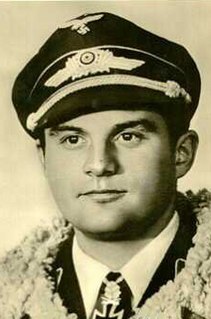
Joachim Helbig was a German bomber pilot during World War II. He joined the Luftwaffe in 1936 and served almost all of his career with Demonstration Wing 1. With his unit, he participated in the Invasion of Poland, the Norwegian Campaign, the Battles of the Netherlands, Belgium, France and Britain in 1939–40. For his contributions in these campaigns, Helbig received the Knight's Cross of the Iron Cross in late 1940. He was then transferred to the Mediterranean theater where he bombed Malta, the British Mediterranean Fleet and flew in support of the Afrika Korps. Helbig received the Knight's Cross of the Iron Cross with Oak Leaves and Swords in late 1942 for the support of Field Marshal Erwin Rommel's 1942 summer offensive.

Frank Reginald "Chota" Carey, was a Royal Air Force (RAF) fighter pilot and flying ace who served during World War II.
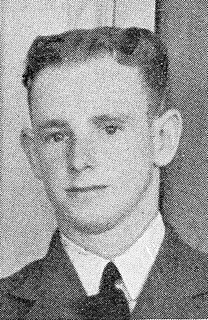
Raymond Brown Hesselyn, was a New Zealand fighter pilot and flying ace of the Second World War, credited with the destruction of at least 18 enemy aircraft while flying with the Royal Air Force over Europe and the Mediterranean.

Eric Stanley Lock, was a British Royal Air Force (RAF) fighter pilot and flying ace of the Second World War.
Brian Carbury, was a New Zealand fighter ace of the Royal Air Force (RAF) during the Second World War. He was officially credited with destroying 15+1⁄2 enemy aircraft.

Squadron Leader Archibald Ashmore McKellar, & Bar was a flying ace of the Royal Air Force (RAF) during the Second World War.
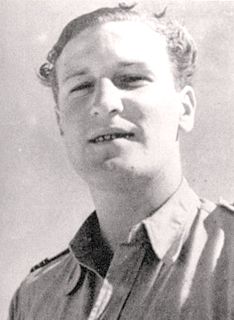
Squadron Leader John Edwin Ashley "Willy" Williams was an Australian air ace during the Second World War. He served in the Middle East and North Africa with the Royal Air Force (RAF), and was among the Allied prisoners of war (POWs) murdered by the Gestapo following "The Great Escape" in 1944. He commanded No. 450 Squadron of the Royal Australian Air Force for three days, before he was captured in 1942.
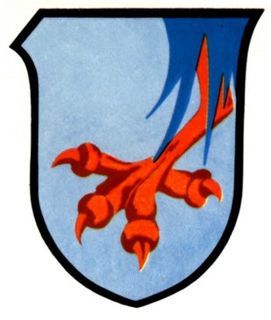
Kampfgeschwader 76 was a Luftwaffe bomber Group during World War II. It was one of the few bomber groups that operated throughout the war.

No. 238 Squadron is a squadron of the Royal Air Force. It was first formed in 1918 by combining number 347, 348 and 349 Flights at RAF Cattewater by the Royal Flying Corps during the First World War. It was reformed for the Second World War, the Berlin Airlift and currently is a Line Training Flight (LTF) squadron based at RAF Cosford, albeit in a non-flying capacity. It is among those officially acknowledged Battle of Britain squadrons.
Air Commodore Sir Archibald Little Winskill, was a British Royal Air Force officer. He flew Spitfires in the Battle of Britain and evaded capture twice during the Second World War on two different continents. After the war, he held a number of appointment in different parts of the world. After retiring from the RAF, he became Captain of the Queen's Flight.
Group Captain George Lovell "Uncle" Denholm, was a Scottish fighter pilot and flying ace of the Royal Air Force during the Second World War. He flew Spitfires during the Battle of Britain, and is counted amongst the ranks of 'The Few'.

No. 485 (NZ) Squadron was a fighter squadron established for service during the Second World War. It was the first New Zealand squadron formed under Article XV of the Empire Air Training Plan. Although many of its flying personnel were largely drawn from the Royal New Zealand Air Force, the squadron served in Europe under the operational and administrative command of the Royal Air Force.
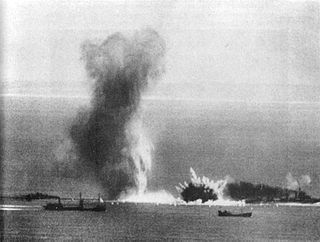
The Kanalkampf was the German term for air operations by the Luftwaffe against the British Royal Air Force (RAF) over the English Channel in July 1940. The air operations over the Channel began the Battle of Britain during the Second World War. By 25 June, the Allies had been defeated in Western Europe and Scandinavia. Britain rejected peace overtures and on 16 July, Adolf Hitler issued Directive 16 to the Wehrmacht, ordering preparations for an invasion of Britain, under the codename Unternehmen Seelöwe.
The Battle of the River Forth was an air battle on 16 October 1939 between Supermarine Spitfires from No. 602 and No. 603 Squadrons of the Royal Air Force and Junkers Ju 88 bombers of 1. Gruppe Kampfgeschwader 30. It resulted when twelve Ju 88s attacked Rosyth naval base at the Firth of Forth. The raid was the first German air raid on Britain during World War II.

Otto Smik DFC was a Czechoslovak pilot who became a fighter ace in the Royal Air Force. He joined the Royal Air Force Volunteer Reserve in July 1940 and was in training until the end of 1942. Between March 1943 and June 1944 he shot down 13 Luftwaffe fighter aircraft probably shot down one more and shared in the shooting down of two others. In July 1944 he shot down three V-1 flying bombs.
Oberleutnant Herbert Schmid was a German World War II pilot who defected to north-east Scotland in May 1943, piloting a German nightfighter with advanced interception radar which allowed British scientists to jam German nightfighter radar.













